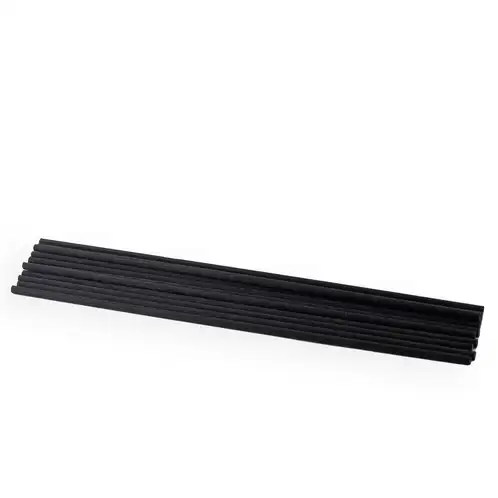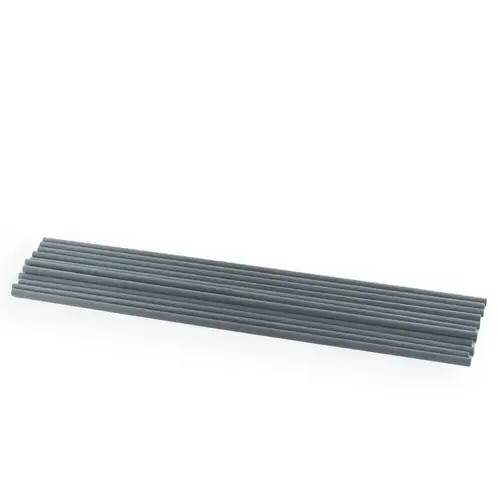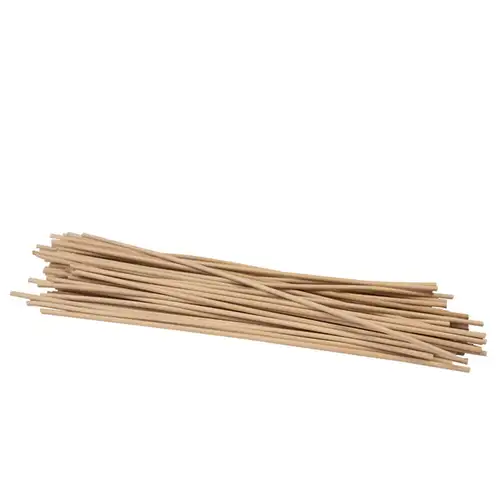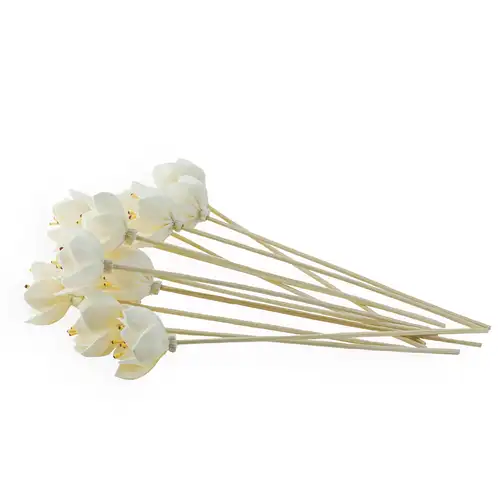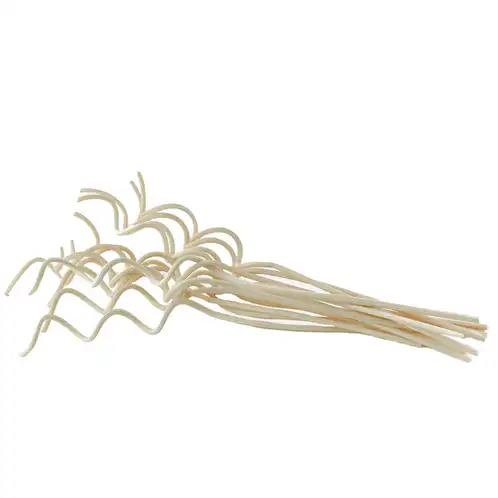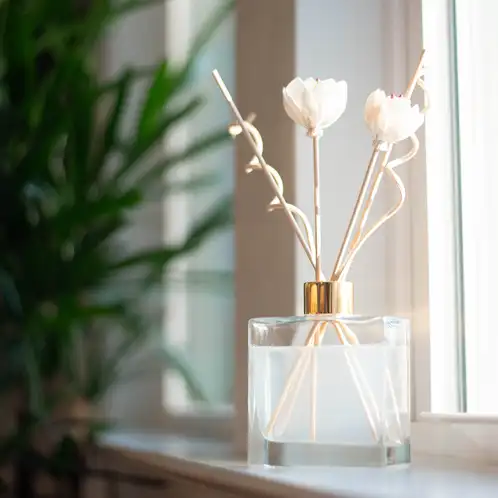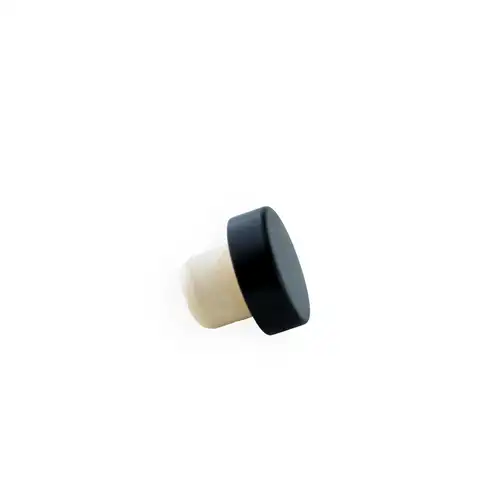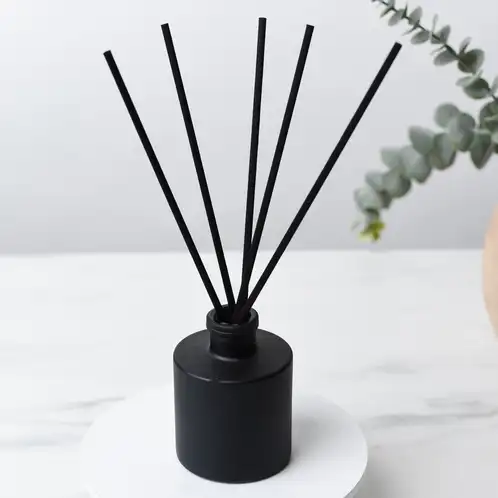Reed diffusers 101: Everything you need to get started with heatless home fragrance Easy to use, quick to make, and super customizable. Discover just how easy it is to add reed diffusers to your collection.
.jpg)
What are reed diffusers?
Typically sold alongside candles and wax melts, reed diffusers are home fragrance products that disperse scent into the air through reed sticks.
Reed diffusers are made by combining fragrance oil or essential oil with a liquid base. The scented reed diffuser solution is held in glass or metal bottles, which are capped with lids or plugs until ready for use. To use reed diffusers, simply uncap the bottle then add diffuser reeds.
Should you add reed diffusers to your line?
Who shops for reed diffusers? Because they don’t require flames or heat, reed diffusers are a great home fragrance option for those:
- that are wary of burning candles for fear of leaving them unattended.
- living in housing that prohibits lit candles.
- concerned that pets or children in the household might disturb a burning candle.
- who simply don’t like the idea of open flames in their house.
Candle makers can increase sales by adding reed diffusers and other flameless options to their collection. Similar to candles, reed diffusers are an attractive option for home decor and add a cozy, welcoming ambiance to lounge areas. They’re commonly used in powder rooms or small spaces, but you can use them in any space where an atmospheric scent is desired.
How long do reed diffusers last?
Reed diffusers can throw scent for an impressive amount of time, often up to three months and sometimes as long as six!
The strength and longevity of reed diffusers depends on several factors (outlined below on this page) in addition to the most important: time.
Over time, reed sticks decrease in performance as they dry out.
Replacing reed diffuser sticks
You can dispose of the old reed diffuser sticks in the trash or according to your local Waste Management agency's guidelines.
To renew the fragrance throw and extend the longevity of your reed diffusers, add new diffuser sticks after disposing of the spent ones. Don't forget to wash your hands after handling used diffuser sticks.
Makers can include replacement reed diffuser sticks with the initial reed diffuser purchase or offer them as an add-on; both options result in customers who rave about how strong and long-lasting your reed diffusers are! Diffuser stick replacement bundles are an easy accessory product to add to your line.
How do you know when to replace your reed sticks?
If you notice that your reed diffuser's fragrance throw is getting weaker, it's likely time to replace your reed sticks. Reed sticks that look dry can also indicate that it's time to switch them for new ones.
We recommend testing your reed diffusers to determine how long they throw scent. Record the number of times you're able to extend the life of your reed diffuser by replacing the reed sticks.
And remember, nose blindness is real! Test in different locations and ask family members or friends for their opinions. Fragrance oils and essential oils all perform differently, so be sure to test every scent you make.
When you’re ready to dispose of the reed diffuser liquid, do not pour it down the drain. To keep them out of waterways, most areas require fragranced oils or solutions to be disposed of in the trash or at a specific facility. Your local Waste Management agency likely shares disposal information on their website, so start there to confirm the proper way to dispose of reed diffuser solution in your area.
What are reed diffusers made with?
A simple and beginner-friendly project, DIY reed diffusers are surprisingly easy to make. Familiarizing yourself with the main components of reed diffusers and gathering the necessary items may be the most time- and effort-intensive part of the process!
We dive into the components of reed diffusers below. You'll learn what's needed and how to select materials for your reed diffusers. Also, use the links in each section to easily build your own reed diffusers.
Diffuser reeds
Also known as reed sticks or reed diffuser sticks, diffuser reeds allow the scented diffuser solution to disperse throughout and scent the air.
When a diffuser reed is placed in the scented solution, it draws the solution up and distributes it from the end placed in the solution to the end sticking out of the container. Once the diffuser reed is fully saturated, it releases the scented solution into the air.
How many reeds should you use in your diffuser? We recommend starting out with six to eight sticks. More reeds result in a stronger throw, meaning you can easily customize the strength of your reed diffuser by using more or less reed sticks.
The difference between fiber and rattan diffuser reeds
Fiber diffuser reeds: Fiber reed sticks carry fragrance to the top of the reed by absorbing the scented diffuser solution and releasing it into the air once fully saturated. In our testing, fiber reed sticks are less likely to clog, begin dispersing fragrance more quickly, and provide a stronger fragrance throw.
For strongly scented reed diffusers, fiber reed sticks are the way to go. It's hard to get a super strong scent throw with heatless fragrance, however, fiber diffuser reeds can help your reed diffusers achieve a stronger scent throw—without needing to add more fragrance.
Rattan diffuser reeds: All-natural rattan reed sticks are the classic option for reed diffusers. Rattan reed sticks are naturally porous and draw the scented diffuser base solution up through multiple cells that look like tiny straws bunched together.
For the best fragrance throw, rattan reed sticks should be cut with a sharp blade so the ends don't split or fray. A clean cut means they can easily carry liquid to the top of the reed, so look for rattan diffuser sticks that are precisely cut when shopping for rattan reed sticks.
Looking for a way to set your reed diffusers apart? Add a few ornamental yet functional Flower Diffuser Reeds or Spiral Diffuser Reeds to your reed diffusers! Fun, whimsical diffuser sticks like these are an eye-catching addition that will differentiate your reed diffusers from the rest.
You can mix and match different styles of diffuser sticks, or stick with a more classic look.
Reed diffuser base
How does reed diffuser base work? If you placed reed diffuser sticks directly in fragrance oil or essential oil, not much would happen because those liquids are too thick to travel up reed sticks alone. Reed diffuser base solves this problem by thinning out fragrance oil or essential oil. Reed sticks are able to pull this less viscous solution upwards, which allows the scent to disperse into the air.
A reed diffuser base is made generally made from a blend of silicones and organic compounds that combine with the fragrance oil or essential oil used. However, our CandleScience EcoBase Reed Diffuser Solution is free from silicone.
Simply pour the reed diffuser solution and fragrance oil or essential oil into the same container, then stir gently to make the final scented reed diffuser solution.
Which diffuser base is right for you?
Best for highly-scented reed diffusers: CandleScience EcoBase Reed Diffuser Solution is optimized to create strong, high-performance reed diffusers. Compatible with both fragrance oil and essential oil, this base creates a diffuser solution that travels effortlessly up reeds to release scent into the air. This formula is proprietary to CandleScience and is made with more renewable resources than the industry standard. It's also free from silicone. If you’ve used the classic Reed Diffuser Base, you might find that you need less fragrance oil or essential oil for a similar result with EcoBase.
Classic option: Our Reed Diffuser Base is a long-time customer favorite. This reed diffuser base also works with both fragrance oils and essential oils. While the EcoBase Reed Diffuser Solution made stronger reed diffusers in our lab tests, the classic base is still a great choice for long-lasting reed diffusers.
Fragrance oil or essential oil
Scented reed diffuser solution can be made with either fragrance oil or essential oil—the choice is up to you! However, keep International Fragrance Association (IFRA) recommendations in mind. IFRA creates rules and regulations for the use of fragrance materials, including setting usage limits for different product categories.
IFRA classifies reed diffusers in Category 10A. Always reference the IFRA certificate of a fragrance oil or essential oil before selecting it for use in reed diffusers. CandleScience lists all reed diffuser safe options for fragrance oils here and essential oils here.
Learn more about IFRA guidelines here.
Packaging and customizing
Glass bottles with stoppers (or leak-proof caps) are the most common packaging choice for reed diffusers, since some components of fragrance oil or essential oil can break down certain plastics.
These can be placed into a reed diffuser box for a complete look.
Labels
Tie everything together with labels. Reed diffusers are also considered home decor items, so your branded label is an important part of the final reed diffuser aesthetic.
Brainstorming label ideas? Head to avery.com to browse designs, create your own, and take 10% off all label orders!
It’s good practice to also include warning labels for reed diffuser products. Just like warning labels for candles, reed diffuser warning labels can help answer any questions customers may have about using reed diffusers safely and ensure they have access to basic use guidelines.
Get more sales with reed diffusers
Reed diffusers are incredibly beginner-friendly products to make at home, but advanced candle makers have reason to love reed diffusers too. By offering flameless-scent options like reed diffusers, more established candle makers can attract new customers or increase current customer spend.
We hope reed diffusers will be an exciting addition to your home fragrance collection, whether you’re interested in offering them alongside candles and wax melts, gifting them to friends and family, or making them to enjoy in your own home.
